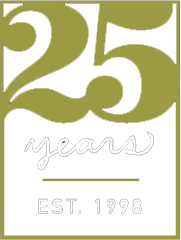Let’s be honest. It’s a competitive world out there and applicants have to do a lot more than craft a compelling resume to land that dream job. Fortunately, there are several ways a savvy candidate can use the format of a job interview to raise their chances of employment.
This post presents a few of the most effective strategies.
Job Interview Tips
Thoroughly research the employer’s company
An interviewer will expect you to have spent some time finding out about their culture and priorities. Many will introduce questions to test your understanding of who they are and what they do. Gaps in your knowledge suggest a lack of genuine interest so be sure to carry out some quality research.
Here are some prompts to guide you:
- Start with the company website. If something is important to the company, it should be on there. Pay particular attention to the company’s mission statement and values.
- Check news sites and social media for company news and announcements. This can indicate the direction the company is taking.
- Can you access the latest company and/or industry reports? Read them.
- What are the company’s most important products or services? Find out.
- Do you know anybody who currently works for the company? Invite them for a coffee.
- Is the company local, national or global? This can give clues about their priorities.
- Who is the CEO? What do they say about the culture at the company?
- Are your interviewers named on the invite? Can you find out anything about them on LinkedIn or elsewhere?
Going into the interview with rich background information on the company can help you to enrich your responses.
How much research should you do? In truth, there is no upper limit. Your goal is simply to find out more than your job rivals have.
Ask the right questions (and not just at the end)
One of the best ways to relax into an interview process is to treat it as a two-way conversation and not an interrogation. And like real conversations, there should be a degree of turn-taking.
It shows a high degree of interest and confidence if you respond to a question with an answer and then a follow-up question. For example, if you are asked about your reasons for applying for the position, you could talk in general about your ambition to develop your skills and then ask them about specific training opportunities.
If you are unable to weave your questions into the interview, at least make sure you have some juicy ones ready at the end. For example, you could ask questions about the company culture, business development priorities, diversity policy and training opportunities. Don’t ask about salary, perks or holidays at this stage as it suggests you are focused on what the company can do for you rather than how you can benefit them.
Prepare for the interview thoroughly
Carrying out company research and coming up with smart questions are both examples of thorough preparation. You should also prepare for the interview by carefully matching your skills and experience to the company’s priorities. Although the job description should help you with this, some are better written than others so use this document as a launchpad for your preparation rather than relying on it alone.
It is now standard practice for interviews to include competency-based scenarios. Rather than relying on instinct alone, use your knowledge of the company to come up with two or three examples of how you have used your skills to achieve success in the past. It is easier to tweak a story to fit the angle of a question than to come up with one off the bat.
Be careful not to over-rehearse your stories. This can make you come across as insincere. Instead, consider the ‘spotlight process,’ This is where you ask yourself some scenario-based questions and then jot down your reply in conversational form. You can then fine tune your verbal response by repeating the process until it feels natural. This helps embed your stories in memory as natural conversations rather than rehearsed written scripts. Try it!
Create a personal brand (but be yourself)
Another novice mistake is to create a professional ‘persona’ and speak through that voice during the interview. While you must conduct yourself in a professional manner, you should focus on presenting your authentic self.
Many experienced candidates have created their own ‘personal brand’ by highlighting their unique skills and attributes in their public profiles. The difference between a personal brand and a fake persona is that the latter involves hiding your real self and the former is all about bringing out your real strengths.
Send a physical ‘thank you’ message
Finally, to ensure the interviewer’s final impression of you is a good one, send a written ‘thank you’ letter or card in the physical mail. Imagine: you have interviewed two high-quality candidates and really can’t choose between them. Your receptionist then brings in the mail and it includes a nicely presented card from one of your interviewees thanking you for your time, expressing their continued enthusiasm for the role and looking forward to the next step in the process. Which candidate would you call?
A note to hiring managers
If you are a hiring manager, you will know that even a positive interview provides only a sketch of the real person and is no guarantee that a candidate will be successful in a role. That’s where InsightIQ delivers added value. Using cutting-edge technology and proven methodology, InsightIQ builds up a richly textured picture of every candidate, helping you to make that final decision with confidence. Contact us today.


